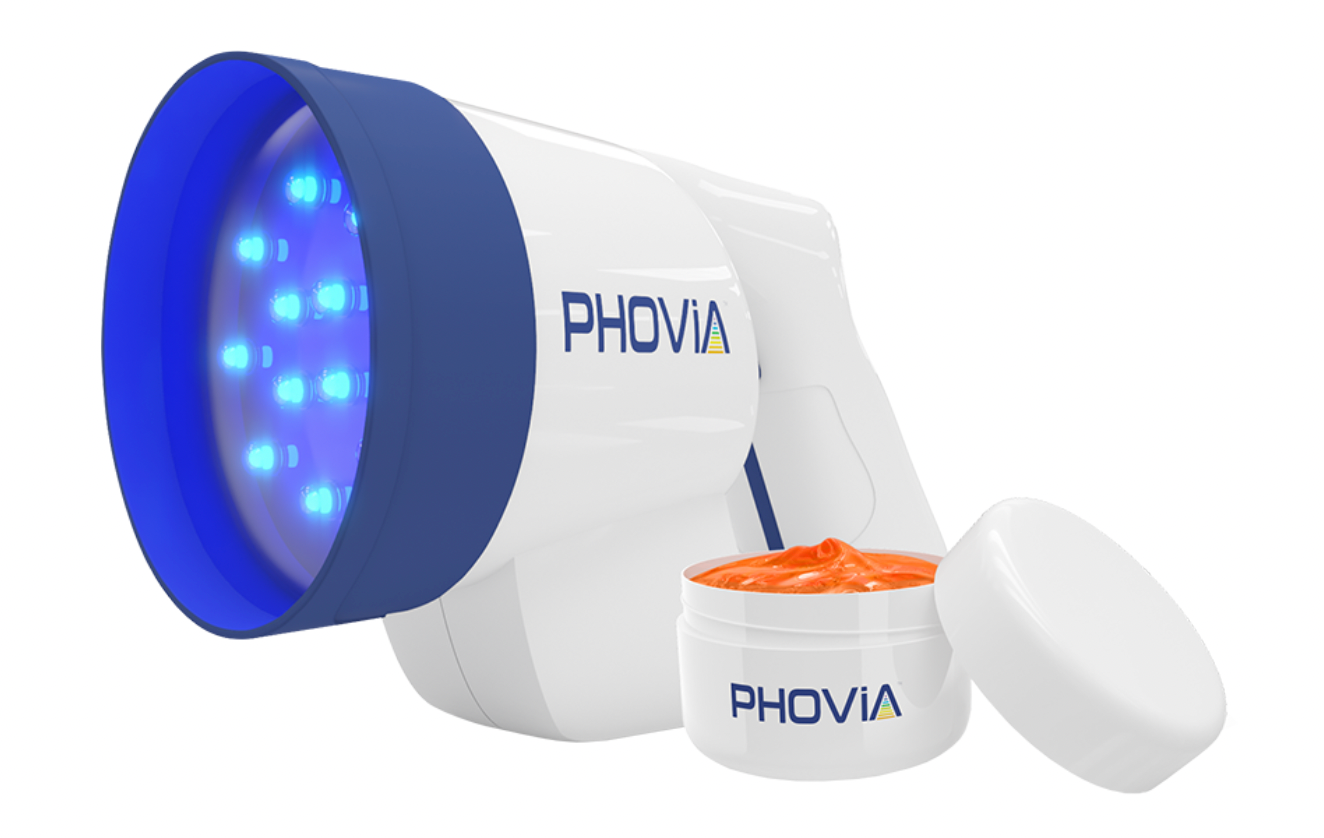Novel fluorescent light therapy system for pets is available to veterinary clinics
Phovia was developed to help accelerate natural skin regeneration of cats and dogs
Photo credit: Vetoquinol Inc

Vetoquinol USA has announced that its’ Phovia dermatology system is now available to veterinary clinics in the United States. Previously made available to veterinarians in most European countries, Phovia was brought to the United States through Vetoquinol’s licensing agreement with Klox Technologies Ltd.
The first fluorescent light therapy system for cats and dogs, Phovia has demonstrated that it helps accelerate natural skin regeneration for most lesions so dogs and cats can recover in up to half the time as they might without it. Phovia can be used to help heal canine dermatological conditions that include surgical incisions, perianal fistulas, interdigital furunculosis, and superficial and deep pyoderma, according to Vetoquinol.
“There is widespread and growing use of commercial and at-home light therapy devices for human use. Now, we are able to bring the benefits of fluorescent light therapy to pets with a clinically proven system,” said Eric M. Alsup, DVM, country manager, Vetoquinol USA, in a company press release. “Phovia can help reduce treatment time for pets with skin lesions, which means less time in cones, e-collars, and bandages.”
This fluorescent light therapy system can be used by trained veterinarians, veterinary technicians, or veterinary assistants. It requires no additional at-home care for owners, according to Vetoquinol.
The Phovia kit has 2 components: an LED lamp, which emits blue, low-energy light, and the Phovia Gel, a unique topical photoconverter activated by the lamp’s light. Although most light therapy systems are limited to a single wavelength—addressing, at most, 1 layer of the skin—the Phovia chromophore gel releases fluorescent light energy at multiple wavelengths, giving multiple beneficial cellular responses simultaneously, according to Vetoquinol.
Despite exerting a biological effect, the Phovia system has proven to be is generally safe for users and pets. This therapy is not indicated for use in photosensitivity conditions such as porphyria, or medication with photosensitizing agents. When they occur, adverse effects could include hair color change, erythema that regresses within 6-12 hours, skin hyperpigmentation, and/or transient pain at the wound site.
Reference
First pet-specific fluorescent light therapy system now available to U.S. veterinary clinics. News release. January 26, 2022. [email]